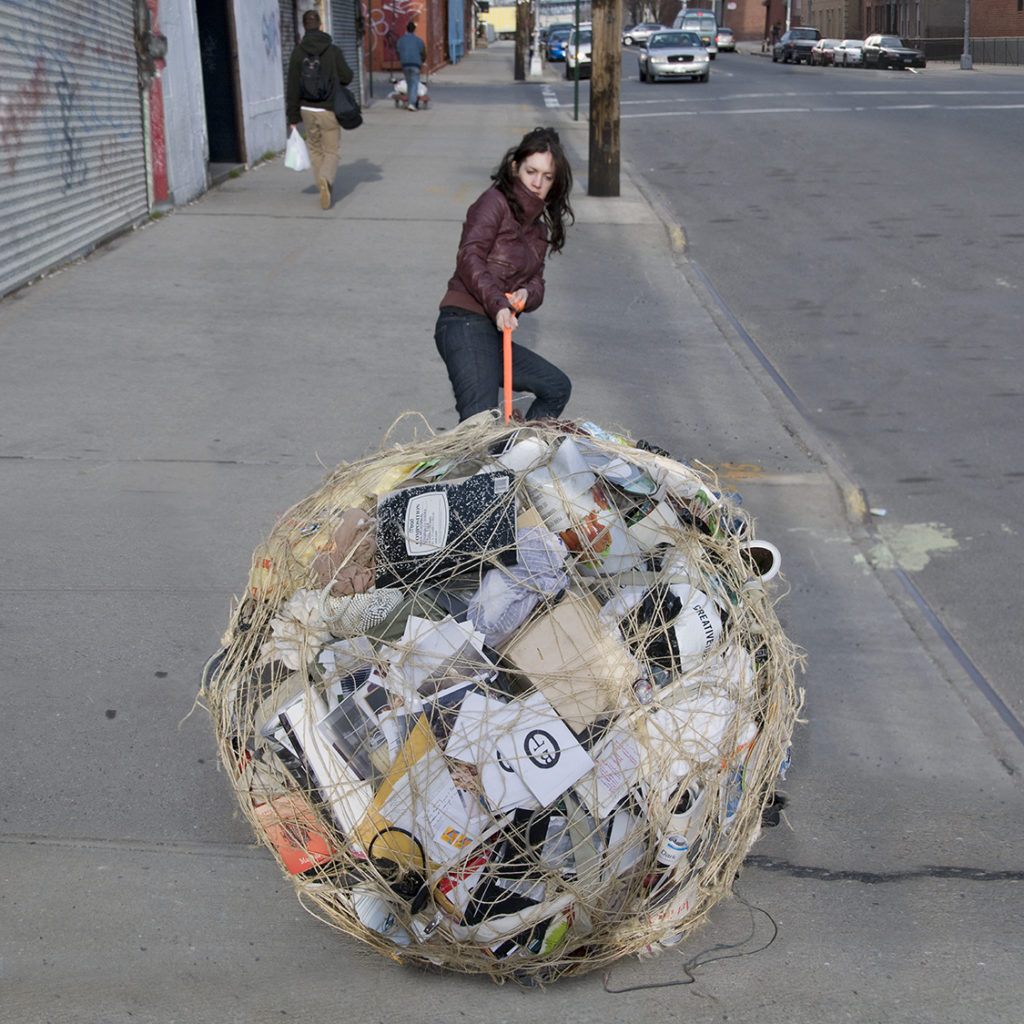Mary Mattingly Named 2023 Guggenheim Fellow
Posted on May 9, 2023
2022 FotoFocus Biennial Artist Mary Mattingly was named as a 2023 Guggenheim Fellow and plans to use this opportunity for a project, Shoal, that will utilize waterways common law as a workaround for public land laws. This will increase the accessibility of public food in New York City by continuing to change foraging and growing policy on public land. FotoFocus welcomed Mattingly to Cincinnati in April 2022 for the Telephotography Symposium and pieces from her project Pull were part of the 2022 FotoFocus Curated Exhibition, On The Line.
Mary Mattingly (Brooklyn, NY) is an American artist known for her photography and public installations that address ecology, such as a mobile free public food forest on a barge in New York City and a temporary reading room for estuarial plants on the Thames in London. Her photographs and sculptures are represented by the Robert Mann Gallery in New York.
As a currently in-process project at Socrates Sculpture Park, Ebb of a Spring Tide pays homage to the immense power of water. Mattingly shared that her “experience living in the lowest level of an apartment building this fall that began to flood when intense rain and high tide aligned instigated the form—it’s somewhere between a deconstructed apartment structure and the East River’s tide map. I felt like I was constantly surrounded by and living with water, and was more compelled to monitor the tides. This in-progress form is what I remember from a dream I had at the time.”
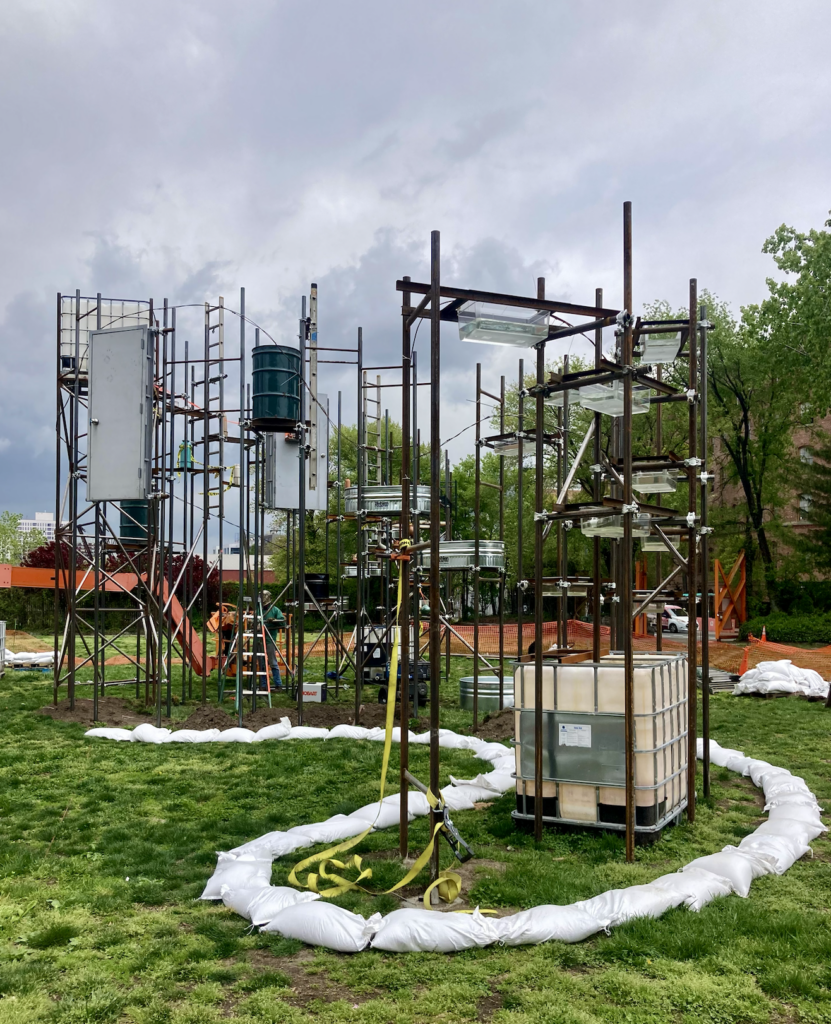
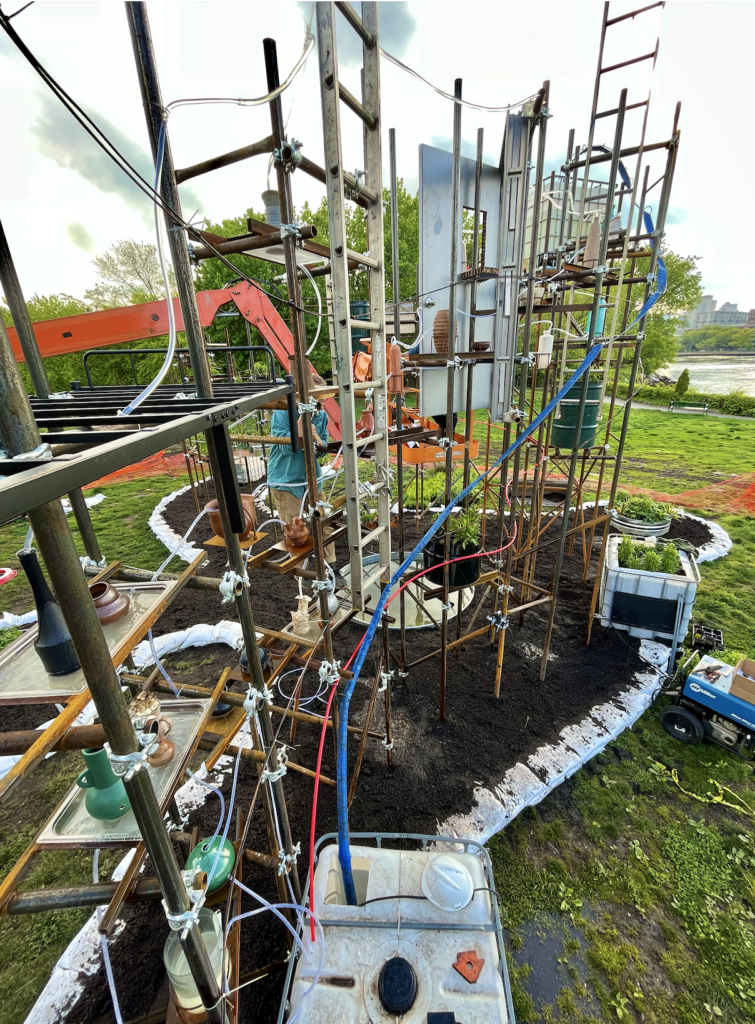
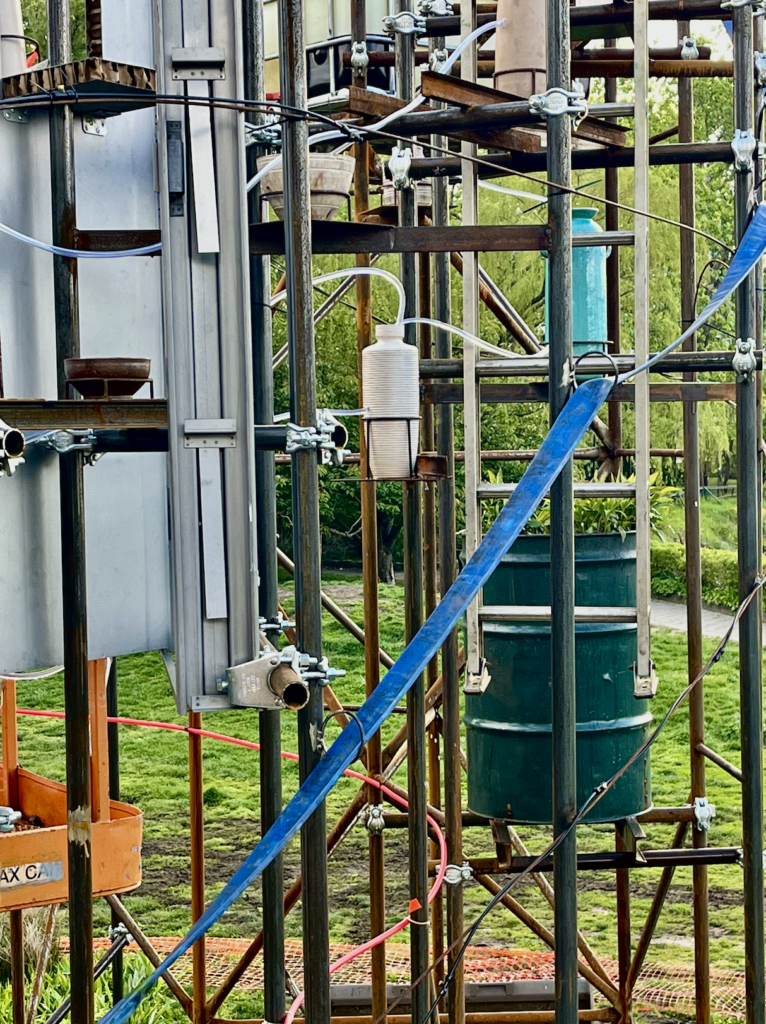
Mary Mattingly, Ebb of a Spring Tide, 2023. Images courtesy of the artist.
Mary Mattingly: Ebb of a Spring Tide is on view May 20 through September 9, 2023 at Socrates Sculpture Park (Long Island City, NY). An Opening Celebration will be held on Saturday, May 20 from 12–5 pm.
FotoFocus chatted with Mattingly to learn more about the Guggenheim fellowship, her artistic trajectory, and her opinion on how art can make a difference in relation to mammoth issues such as climate.
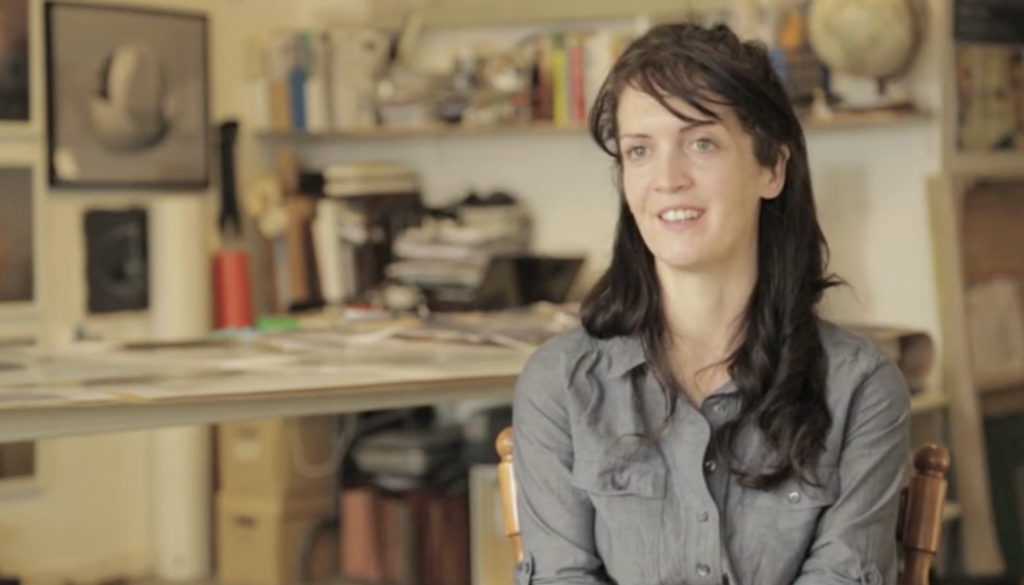
FotoFocus: You plan to use your Guggenheim fellowship for a “contemplative floating installation that will serve as a more permanent and accessible food forest.” What can you share about this project?
Mary Mattingly: It’s such a thrill to have received the honor of a Guggenheim fellowship. For the past year, I’ve been able to work closely with students designing this more contemplative vessel, and now it’s time to take the ideas into the world with participatory design events. Shoal will combine a contemplative water cycle with a food forest that focuses on saline farming to grow perennial halophyte fruits and vegetables. The project will also increase the accessibility of public food in New York City, inspire adaptation, and work to continue to change foraging and growing policy on public land by utilizing waterways common law as a workaround for public land laws. Visitors can experience a shift in perception by boarding the floating platform, which feels like land but moves with the water, offering a different perspective of the city and building imagination around alternative futures.

FF: What has been your artistic trajectory up until this point? What are your priorities when it comes to your artistic practice?
MM: In my work and life, I have always considered water, food, and home to be crucial investigations. Growing up in a rural town outside of New York City, I had a mixed relationship with water—I both feared it and appreciated its importance. The water available there was contaminated with agricultural runoff, which made me aware of the negative impact farming practices could have on drinking water and human health. For me, having an ecological focus that responds to a place and encompasses home was not a choice but a fundamental part of how I perceive the world. My priorities are the same in life and art; I prioritize my desires: loving and being loved, learning and teaching, questioning, and bringing people together.
FF: Do you see your work within performance art, installation, photography or all three?
MM: I have a particular methodology. As an artist, I began making sculptures that were wearable. I’d bring them to the desert near the place I lived at the time and test them as habitats. As I photographed these I started to combine the sculpture with performance. Following that, the sculptures became larger. Some may be considered installations, although I always refer to them as sculptures. Sometimes the interaction is prioritized and the sculpture acts as a platform for the interaction but it’s always thought through, from the materiality to the place, and sometimes the opposite is true, the sculpture is prioritized and the interactions enliven it. The sculptures are always documented through photography.
FF: The Guggenheim fellowship is diverse in its awardees, drawing from individuals in the arts, humanities, social sciences, and sciences. As an interdisciplinary artist, what is the particular appeal of the fellowship, beyond the evident support and prestige?
MM: First, it’s being able to share this method of artmaking with a larger audience. Being able to access and learn from this incredible network of individuals is also part of the appeal. The fellowship will connect me with people I may not have had a direct connection with before, from composers to mathematicians and writers. Since it was just awarded a couple of weeks ago, I don’t know how yet it will open up my world but I am confident that it will.
FF: At the Telephotography Symposium in April 2022, you talked about “the collaborative monument of the landfill” and understanding your own consumption. How do these ideas inform how you consider the role of the individual within your work and in relation to climate change?
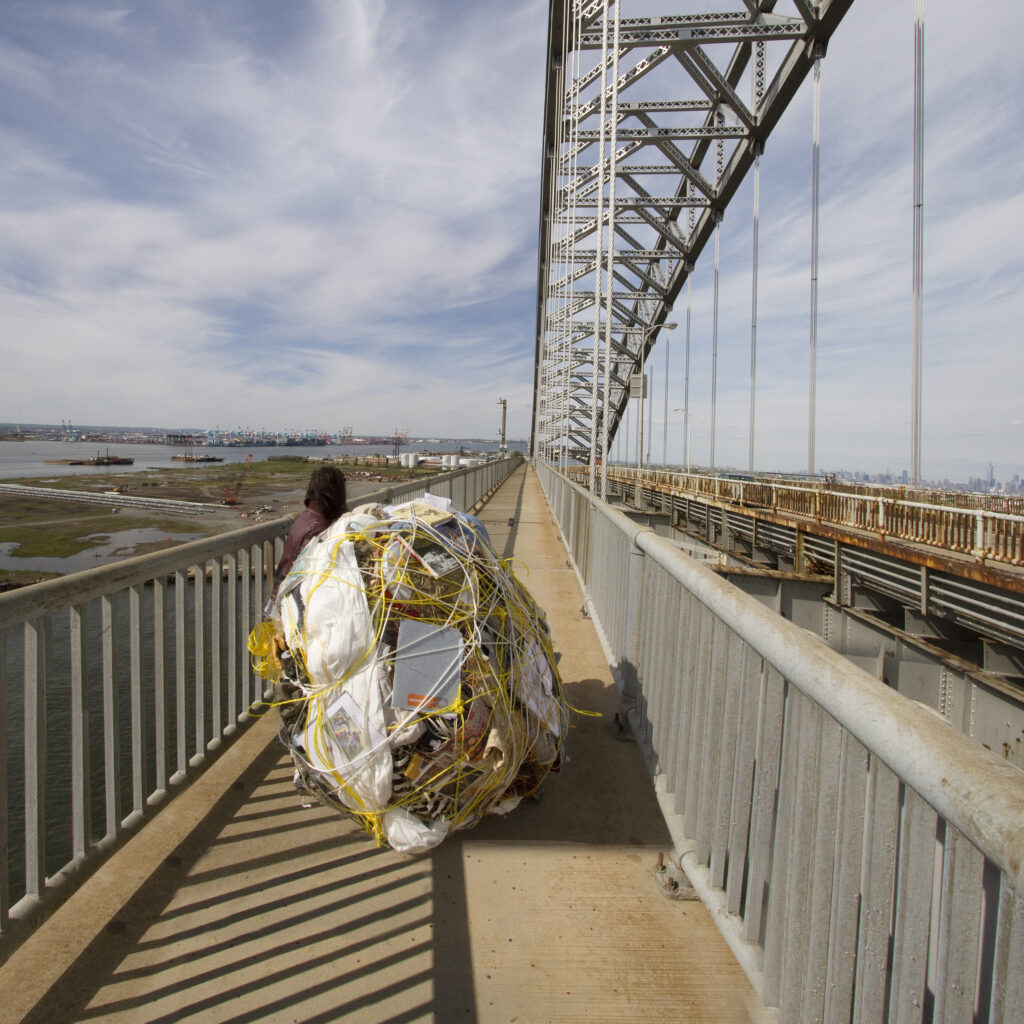
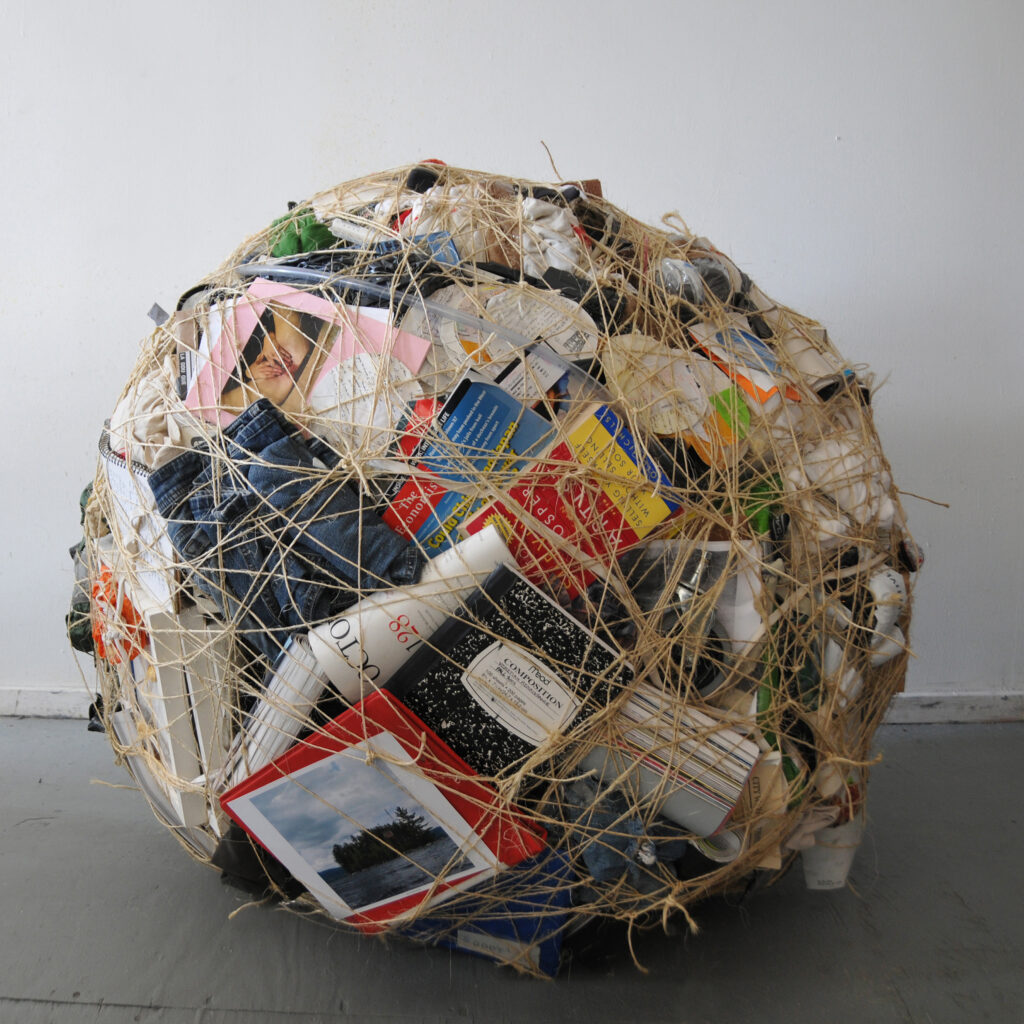
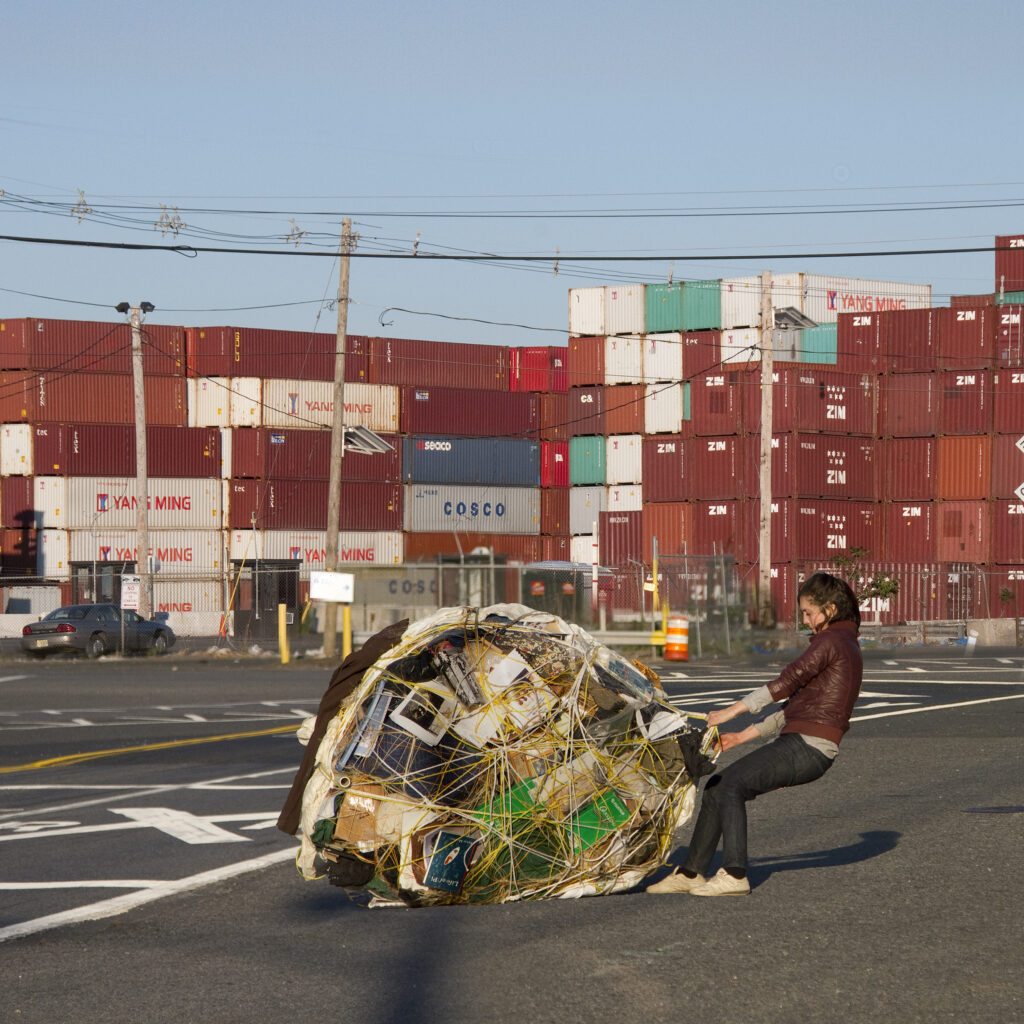
Mary Mattingly, Pull, 2013. © Mary Mattingly. Courtesy of Robert Mann Gallery
MM: In 2013, I bundled almost all of the objects in my possession into seven large boulders that could be rolled or pushed, and pulled the bundles through New York City’s streets to emphasize the weight of my personal consumption based on these particular objects: how the materials were extracted, where they were manufactured, shipped, what ecosystems they interrupted along the way. Each object I held was embedded with these traumas that informed everyone that came into contact with them. It’s all interconnected—the individual and the group, the waste one person may make multiplied by 9 million city dwellers—and the effect is staggering on a daily basis.
FF: Please share your thoughts on how art can really make a difference in relation to mammoth issues such as climate.
MM: I believe that each person has a role to play in a local, and therefore also a global, discussion on issues such as climate. Visual and cultural languages are crucial in the facilitation of these discussions—they can bridge and encourage thoughtful and nuanced conversation, and lead to alternative possibilities. So for example, the vision for Swale was to increase access to local food and clean water through a commons governance system in a largely privatized city, specifically addressing food and water. As an imaginary, the commons can provide an opportunity to start anew with a powerful way to reconceptualize economics, governance, and policy, and revitalize democratic practices at a time when politics are polarized and existing orders don’t seem capable of reforming themselves. Through Swale’s engagement around public food, and through being a visible platform that elevated enough people’s concerns, in 2017, the New York City Parks Department opened their first land-based pilot—a 24-hour public “foodway” at Concrete Plant Park in the Bronx. If there is enough additional interest from residents in stewarding edible plants from people in communities near other public parks, the Parks system will work with other groups to do more.
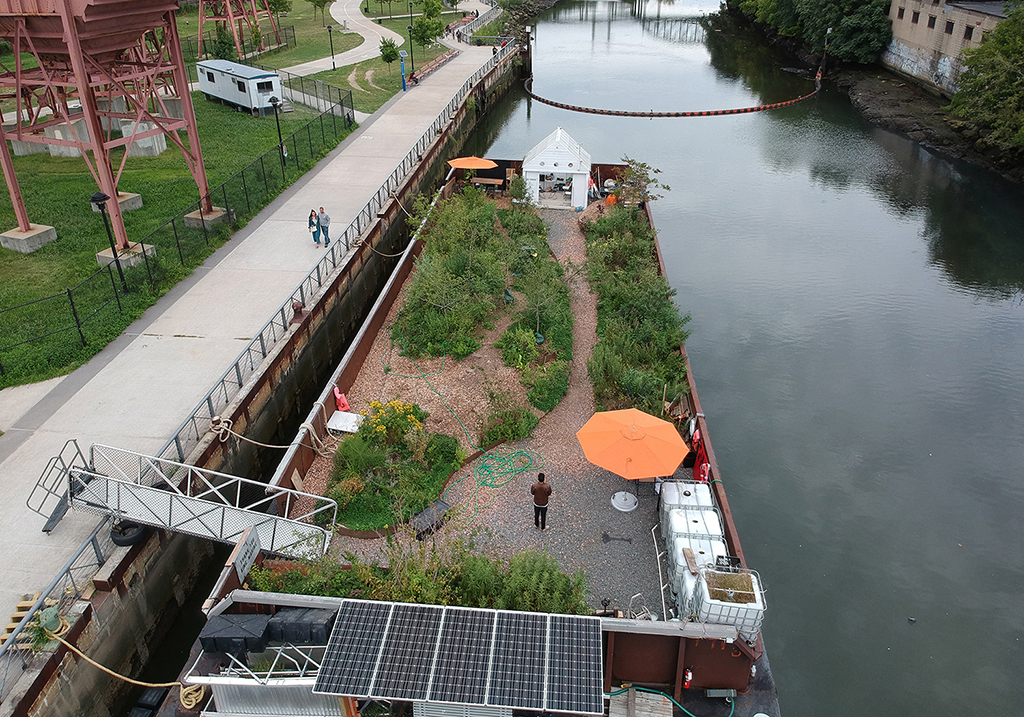
FotoFocus welcomed Mattingly to Cincinnati in April 2022 for the Telephotography Symposium, where she participated in a panel, Remote Exhibiting on Day 1 of the Symposium to examine how artists and curators are making use of technology to create and critique from afar. This panel was moderated by Kevin Moore, FotoFocus Artistic Director and Curator, with panelists: Chandra Frank, Post-Doctoral Fellow at the Charles Phelps Taft Research Center at the University of Cincinnati and Independent Curator, Cincinnati, OH; Mary Mattingly, Artist, Brooklyn, NY; and Kevin Schmidt, Artist, Toronto, Canada.
